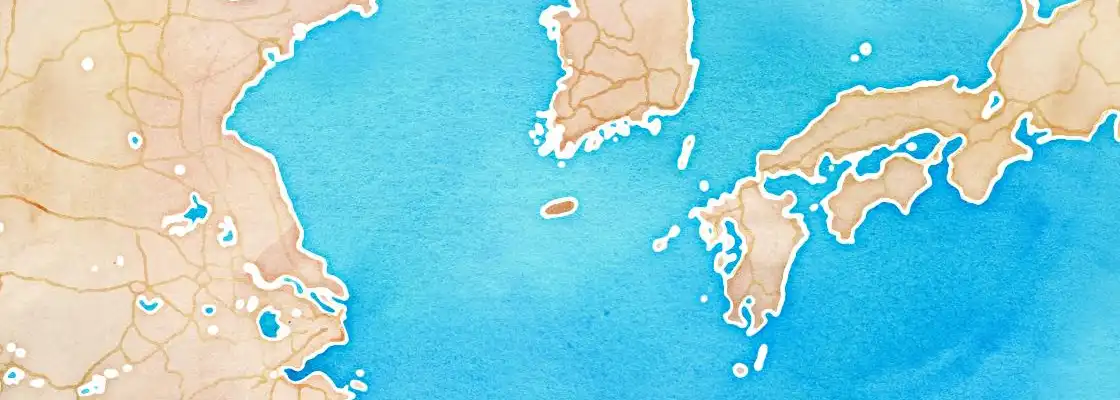The Port of Cheju, located in Cheju City on the northern coast of Jeju Island, is a vital gateway to this popular South Korean tourist destination. As the island's primary maritime hub, it accommodates both large passenger cruise ships and significant cargo traffic. The island itself is a volcanic wonder, often referred to as the 'Hawaii of Korea' for its beautiful beaches, lush countryside, and unique geological formations.
For cruise passengers, the port serves as the entry point to a UNESCO World Heritage site known for its volcanic landscape. Its modern cruise facilities are designed to handle thousands of visitors, making it a key stop on many East Asian itineraries. The port's strategic location provides relatively easy access to the attractions of both the northern and eastern parts of the island.
One of the most accessible and famous sights is Yongduam Rock, or Dragon Head Rock, located just a few minutes' drive from the port. This volcanic formation along the coast is a popular spot for photos and enjoying the sea breeze.
For nature lovers, a visit to Hallasan National Park is a must. While a full hike to the summit of the dormant volcano takes all day, the park's entrance is only 30-40 minutes away by car, offering shorter, scenic trails at its base.
A remarkable geological wonder is the Manjanggul Cave, a UNESCO-listed lava tube system about an hour's drive east of Cheju City. Visitors can walk through a one-kilometer section of this massive, well-preserved tunnel, offering a glimpse into the island's volcanic origins. For a taste of local culture and food, the bustling Dongmun Traditional Market is located in the heart of the city and is easily reachable from the port.
Last updated on June 26, 2025
A popular day trip is to Seongsan Ilchulbong, also known as 'Sunrise Peak,' located on the eastern coast of the island. This UNESCO World Heritage site is a massive volcanic crater offering breathtaking views and is approximately a 1.5-hour drive from the port.
Another common destination is the city of Seogwipo on the southern coast, about an hour's drive away. The area is known for its stunning waterfalls, including Cheonjeyeon Falls and Jeongbang Waterfall, which is one of the few waterfalls in Asia to fall directly into the ocean.
For a unique experience, some visitors travel to Udo Island, a smaller island just off Jeju's eastern shore. Reached by a short ferry ride from Seongsan Port, Udo is famous for its beautiful beaches, peanut fields, and scenic coastal road, which can be explored by bicycle or scooter.
Last updated on June 26, 2025
The Jeju Cruise Terminal is situated at the Port of Jeju, on the northern shore of the island. It is conveniently located just a few kilometers from the downtown area of Cheju City. The proximity means that the city's main shopping districts and some attractions are a short distance away.
Due to the distance, a short taxi or shuttle bus ride is the most practical way to reach the city center, typically taking about 10-15 minutes. While the cruise terminal itself has basic amenities like tourist information and restrooms, the immediate port area is industrial and not designed for pedestrian exploration. Cruise ships generally dock directly at the pier, so tendering is not typically required.
Last updated on June 26, 2025
The official currency is the South Korean Won (KRW). While major credit cards like Visa and MasterCard are widely accepted in hotels, larger restaurants, and department stores, it is highly recommended to carry some cash for smaller eateries, local markets, and taxis.
US Dollars and Euros are generally not accepted for direct transactions. ATMs are widely available throughout Cheju City and can be found near the port terminal and in major shopping areas. Currency exchange services are available at banks within the city and sometimes at a booth in the cruise terminal.
Last updated on June 26, 2025
Cheju City and Jeju Island are widely regarded as very safe destinations with low crime rates. It is generally safe for cruise passengers to explore independently, even after dark in populated areas. The local population is known for being friendly and helpful to tourists.
Standard travel precautions should still be observed, such as being aware of your surroundings in crowded places like markets and keeping your valuables secure. There are no specific areas to avoid. When hiking on trails in places like Hallasan National Park, it is important to stay on marked paths and be aware of changing weather conditions.
Last updated on June 26, 2025
Jeju Island has a temperate climate with four distinct seasons. The main cruise season in spring (April-June) and autumn (September-November) offers the most pleasant weather, with mild temperatures typically ranging from 10°C to 25°C (50°F to 77°F). These seasons are ideal for outdoor activities, though light showers are possible.
Summer (July-August) is hot and humid, with temperatures often rising above 30°C (86°F). This is also the monsoon and typhoon season, so passengers should be prepared for heavy rainfall and potential weather-related disruptions. Packing light layers, comfortable walking shoes, and rain gear is advisable, especially during the summer months.
Last updated on June 26, 2025
Transportation options for cruise passengers primarily include taxis and public buses, as there is no train system on the island. Taxis are readily available at the cruise port and are a convenient, metered option for reaching specific destinations. It is helpful to have your destination's name written in Korean, as many drivers do not speak English.
The island has a comprehensive public bus system that is very affordable and can take you to most major tourist sites. The main hub is the Jeju Intercity Bus Terminal in Cheju City. While efficient, navigating the bus system can be challenging for those who don't speak Korean. For convenience and to maximize time, many cruise visitors opt to hire a taxi for the day or join a shore excursion.
Last updated on June 26, 2025
Excellent shopping can be found in downtown Cheju City. The Chilsung-ro Shopping Town is a pedestrian-friendly street lined with brand-name stores and restaurants. Nearby, the Jeju Jungang Underground Shopping Center offers a climate-controlled environment with a wide variety of shops selling clothing, cosmetics, and souvenirs.
For a more traditional experience, Dongmun Market is a must-visit. It is one of the oldest and largest permanent markets on the island, offering local produce, fresh seafood, and unique souvenirs. Popular local specialties to buy include hallabong (a type of tangerine) flavored chocolates, local green tea, and small replicas of the iconic 'dol hareubang' stone statues. Prices in most stores are fixed, but some friendly bargaining may be possible with street vendors or at the market.
Last updated on June 26, 2025









Showing 4 ships in the area
No ships scheduled in port today.
Last updated on June 13, 2025
Taxis are readily available at the cruise terminal and are the most convenient way to reach attractions; the Jeju City Tour Bus also serves key tourist spots. Some areas like Dongmun Market may be walkable for those who enjoy a stroll.
Yongduam Rock (Dragon Head Rock) and the bustling Dongmun Traditional Market are popular attractions easily accessible by a short taxi ride from the port. The Jeju Folklore & Natural History Museum is also relatively close for insights into local culture.
Near the port, try Jeju's famous black pork BBQ or fresh seafood stews at restaurants in the Tapdong area or around Dongmun Market. Don't miss out on trying local hallabong (citrus) products.
The local currency is South Korean Won (1 USD = 1354.93 KRW). ATMs are widely available at the cruise terminal, in shopping areas like Jungang Underground Mall, and at local banks in Jeju City. Banks offer currency exchange, but ATMs dispensing South Korean Won are often more convenient.
Cruises typically visit Jeju in spring (April-May) or fall (September-October) when temperatures are mild (15-25°C or 59-77°F). Pack layers, including a light jacket and possibly a compact umbrella for occasional showers.
Iho Tewoo Beach, known for its horse-shaped lighthouses, is the closest to Jeju City and accessible by a short taxi ride. For more expansive beaches like Hamdeok or Hyeopjae, a longer taxi or bus journey is required.
Cruise lines offer excursions to major sites like Seongsan Ilchulbong (Sunrise Peak) or Manjanggul Cave. For independent exploration, hiring a taxi for a day can provide flexibility to visit specific attractions at your own pace.
Dongmun Market is excellent for local foods, crafts, and souvenirs, while the Jungang Underground Shopping Mall offers fashion and cosmetics. Popular souvenirs include Jeju chocolates, hallabong-flavored treats, and volcanic stone crafts.
Consider visiting Seogwipo on the south coast for its scenic waterfalls and coastline, or explore natural wonders like Hallasan National Park (hiking requires pre-booking and time). These are best reached by pre-arranged tour or taxi for a day trip.
Jeju Island is famous for its unique 'Haenyeo,' female divers who free-dive to harvest seafood, a tradition inscribed on UNESCO's Intangible Cultural Heritage list.
Overall cruises that visit Cheju City are somewhat expensive compared to other itineraries. Sailings visiting Cheju City during the the peak season of spring are significantly more expensive than the the low season of fall. The illustration below shows the monthly average cost per day for cruises visiting Cheju City.
Want to hear about the best deals and cruise tips every week? Sign up for our free weekly VIP Newsletter, customized exactly to your preferences!